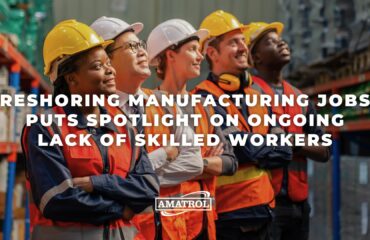What’s the greatest challenge facing manufacturers today? Is it inflation? Ongoing supply chain issues? Competition from foreign companies? All of those could arguably be listed as significant challenges, but there’s one challenge that most, if not all, manufacturers would agree remains their biggest barrier to growth and profitability: hiring enough skilled workers to fill their open manufacturing positions.
For years now, manufacturers have faced a skills gap, which results in too few skilled workers to meet growing demand in manufacturing. There are hundreds of thousands of open manufacturing positions across the country, and that number is only expected to grow in coming years unless all the interested parties work together to develop solutions to create a pipeline of skilled workers.
A related problem that doesn’t get nearly as much attention as the skills gap is the fact that, once hired, keeping highly skilled workers is also a challenge for many manufacturers. In a recent Industry Week article by Bill Remy, the author notes that nearly one-third of new workers leave within the first three months after being hired. Why are manufacturers having such a problem with retention?
Remy believes that “[t]he problem isn’t that people don’t want to work. It’s that so many companies are failing to deliver a solid onboarding program that makes people want to stay.” According to Remy, “[s]uccessful onboarding is more than just signing a few papers and stepping up to the production line. With careful planning, thorough training and ongoing support, new employees—and the companies who hire them—will be much more efficient, productive and profitable.”
It’s no accident that Remy focuses on the importance of training to employee retention. The author offers a variety of onboarding tips for human resources professionals working in manufacturing, and several of them reinforce how critical employee training really is. Here are just a few examples of Remy’s recommendations:
- Reasonable expectations: “It can take months for a new hire to become proficient at machine operation or assembly tasks. A good onboarding and training program should take at least 90 days before you evaluate their performance against standard KPIs.”
- Don’t overburden HR: “HR teams are there for payroll and benefits enrollment and culture acclimation, but when it comes to job skills, that has to happen on the shop floor. Combine classroom instruction with hands-on training for maximum efficiency.”
- Broaden your focus: “Don’t assume seasoned operators are naturally good at teaching. Implement train-the-trainer programs that designate mentors to serve as instructors and arm them with teaching tactics to optimize instruction.”
- Avoid the “sink or swim” approach: “Working alongside experienced operators may make new hires feel intimidated or afraid to ask questions if they don’t understand something. Instead, supervisors should provide ongoing support through regular check-ins to make sure trainees are getting the instruction they need.”
- Consistency is key: “Trainers are only effective if they’re working from an approved protocol; otherwise, they may not communicate process and procedures correctly. Create standard work, and make sure it’s well-documented and easy to understand for any skill level.”
- Don’t make assumptions: “The workforce has changed. People don’t work on their own cars anymore and few have industrial experience. Many come from the retail and hospitality industries where they’ve never had to read blueprints or schematics. Have reasonable expectations about their baseline skill level and plan for training in areas seasoned employees probably take for granted.”
As you read through this list, did many of these ideas seem self-explanatory? Did some of them seem like no brainers? While these ideas about the importance of effective training might seem obvious, too many manufacturers don’t invest in proper onboarding and training procedures and, as a result, suffer the consequence when their hard work put into finding skilled workers ends up being wasted when those workers leave just a few short months later.
Of course, setting up an effective onboarding and employee training program might seem like a daunting task, and it can be if you’re starting from zero. Fortunately, you don’t have to be an expert at training to implement a new program.
The experts at Amatrol have been working hand-in-hand with industry and educational institutions for years to design training programs featuring eLearning curriculum and hands-on experience with trainers equipped with industrial components workers will encounter on the job.
Visit Amatrol online to learn more about its many different types of training programs. For more information about how Amatrol can help you inspire and train the next generation of workers, contact an expert at Amatrol today!





